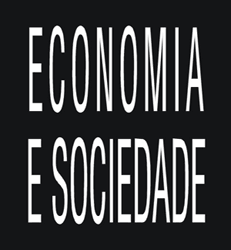This present paper applies both the institutionalistic and neo-Schumpeterian approaches in order to understand the dynamics of industrial development and the consequent evolution of the economic unbalance of the State of Rio Grande do Sul. The hypothesis is that two path dependencies were originated, one was dynamic and the other was not. Such path dependencies were determined widely by technological factors and by the institutional matrix of the two "halves". Present in the original path, elements of long duration such as ownership rights, learning, social structure, ideology, habits, public policies and inovations, all produced local private industries, which explain the course of industrial development and the regional stability of this State. The evolutionary analysis shows two crucial periods for the understanding of the industrial development of Rio Grande do Sul: the beginning of the Old Republic and the beginning of the second half of the 20th Century. In both those moments, Rio Grande do Sul's economy was going through a crisis, but soon afterward it was restructured. The Northern Half was the region responsible for the technoproductive change in both periods, thus consolidating itself as the dynamic industrial matrix.
Industrial development; Industrialization; Economic development; Rio Grande do Sul; Regional inequality




